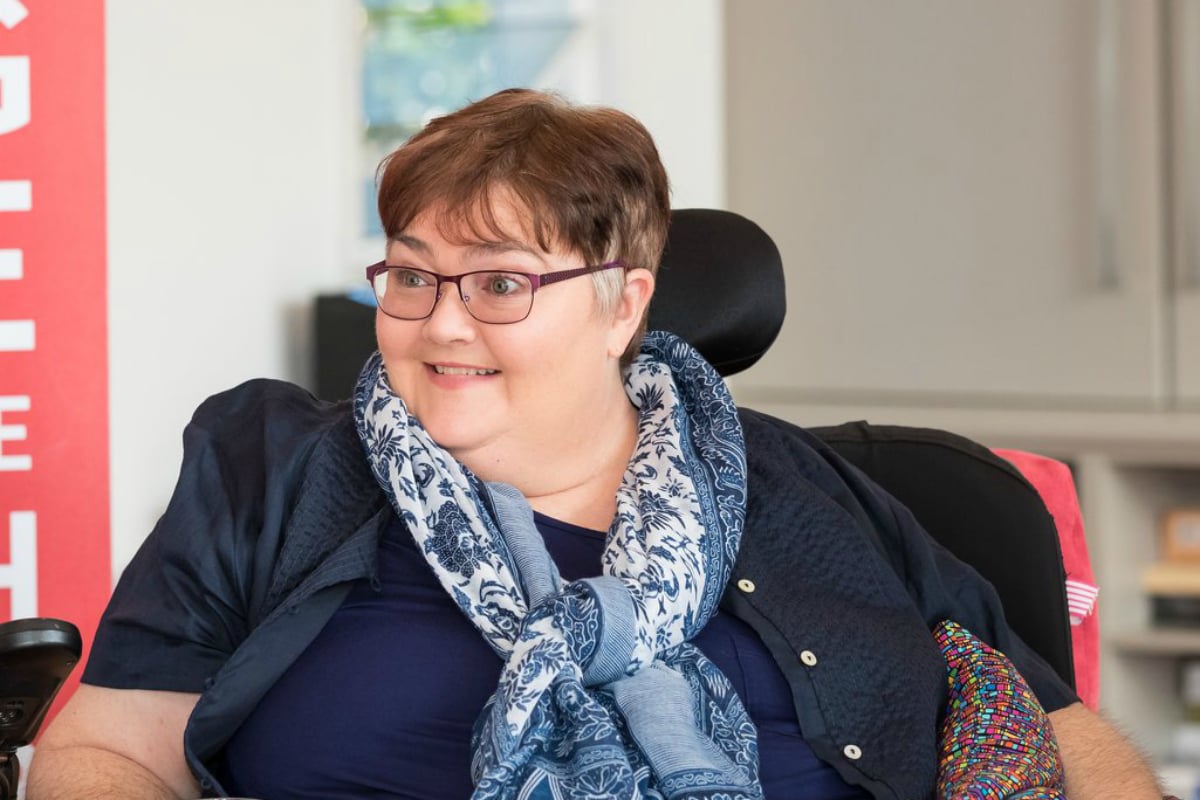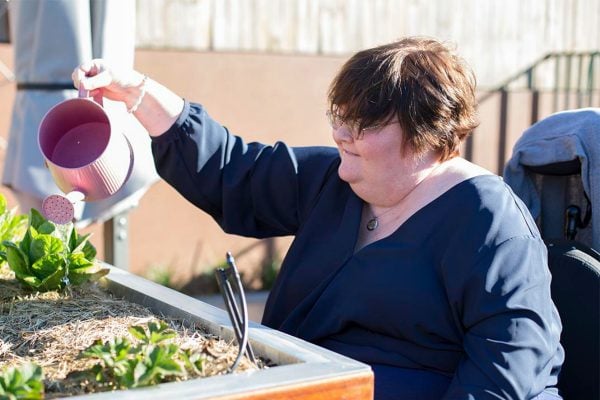
For close to two years Trina Stewart lived in what she now calls “a cell”. A small, dim room in a Brisbane aged care facility, a place where most of the residents were close to twice her age, where her few moments of pleasure came from what little time she could spend outside in the garden.
Trina, a former research scientist, was just 45 at the time, prematurely trapped as a result of her high-care needs.
The nursing home placement was the only one available to her when she left hospital after experiencing a stroke in 2013.
“It was a huge adjustment. There was no one really I could talk to. The staff were constantly busy, and the other residents really weren’t compos mentis [of sound mind] enough to speak with,” she told Mamamia. “That was the hardest thing, that and not feeling totally isolated from the community.”
Trina was among an estimated 6,200 Australians under the age of 65 with high-support needs living in aged care facilities – a number that’s remained largely unchanged for the past decade. These young men and women, some of whom are in their teens, typically find themselves in nursing homes due to a lack of suitable, accessible and affordable housing.
The issue is one of the issues to be examined by The Royal Commission into the Quality and Safety of Aged Care, hearings for which started in Adelaide last week. The investigation has been welcomed by organisations including Youngcare, a not-for-profit that advocates for and provides housing/equipment solutions for young Australians with high-care needs.



Top Comments
This will be my reality if anything happens to my husband. I can no longer do many simple things because of severe arthritis, peripheral neuropathy and arachnoiditis. However, I'm extremely adaptable and don't need to be in the company of others. I'd have my tablet as company. My parents died in aged care. My dad had severe dementia but my mum found it difficult to adapt. It's a terrible conundrum.
Feels strange to be upvoting a comment like that, like, it's a good comment and thanks for sharing, but I don't like the outcome.
Does that make sense?
Yep, it makes perfect sense. However, you can't turn your back on reality. I think it's best for me to live by the old saying which I've altered to fit my belief system: I need to have the courage to change the things I can, the strength to endure the things I can't and the wisdom to know the difference.
The Serenity Prayer. It's a good one.
Though I'm more of a Desiderata fan myself.
I have the Desiderata on my bookmark. I love it.
I agree 100% that far more funding and attention needs to be poured into nursing homes and other supportive care environments - it's not easy or inexpensive to find that happy medium between providing (often very demanding) nursing care in a setting that doesn't feel like an impersonal institution. However, I find it also sad that we seem to care more about the condition of nursing homes when a younger person is living in them. Understimulating, bleak environments are just as depressing and awful for the elderly.